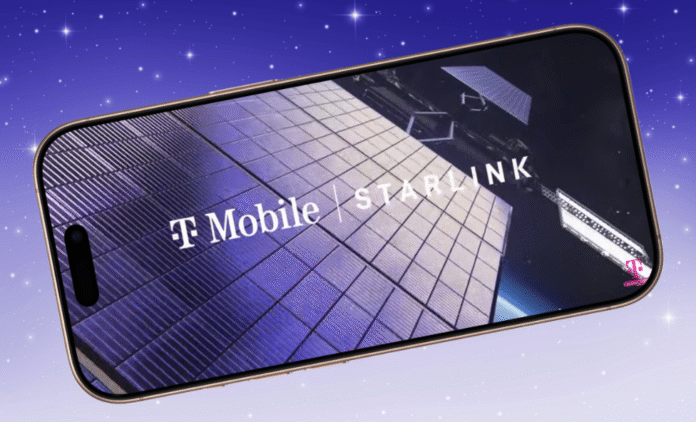Key Point Summary – Starlink Internet on iPhone
- Starlink texting rolls out via iOS 18.3.
- Only iPhone 14 and 15 models supported.
- T-Mobile users in U.S. get first access.
- Texts work without cell signal or Wi-Fi.
- No need to aim phone at sky.
- Powered by Starlink satellites, not Globalstar.
- Apple hints voice and data may come next.
Apple Breaks the Signal Barrier
Apple has just redefined “no service.” In a headline-grabbing move, the tech giant teamed up with Elon Musk’s SpaceX and T-Mobile to launch Starlink satellite texting on iPhones. And it’s no gimmick.
With the rollout of iOS 18.3, users of select iPhone models can now send messages — even when they’re far beyond the reach of a single cell tower.
The catch? It’s not for everyone. Not yet.
Only These iPhones Can Use It
If you’re carrying an iPhone 14 or iPhone 15, you’re in luck. All variants — base, Plus, Pro, and Pro Max — are officially supported. But earlier models? Not compatible.
So for iPhone 13 users and below, that dream of texting from the middle of nowhere? Still out of reach.
Apple Insider confirmed that only phones equipped to access T-Mobile’s 1900 MHz (Band 25) can connect directly to Starlink’s satellites. And right now, that’s just the last two generations.
The Sky Is Now Your Signal
No bars? No problem. Starlink’s new direct-to-cell service means your iPhone can now talk to satellites like they’re floating cell towers.
You don’t even need to hold your phone to the sky. Unlike Apple’s previous Globalstar-based SOS feature, this runs seamlessly in the background.
In short: if you’ve got the right phone and no signal, your texts still go through. It’s as simple — and revolutionary — as that.
Only T-Mobile Users Get First Shot
For now, this high-tech feature is in beta. That means access is limited to a select group of T-Mobile customers in the U.S.
A new toggle in iOS 18.3 settings gives you control. You can turn it on, or disable it entirely if you’re concerned about battery life or privacy.
But the beta test is only the beginning. Insiders suggest that Starlink texting will expand to more carriers later this year — and maybe even add voice calls and internet browsing down the line.
Public Reaction Is Over The Moon
Online chatter exploded the moment news broke.
“Starlink on my iPhone?? I can finally go hiking without worrying!” one user posted on Reddit.
On X (formerly Twitter), others celebrated the privacy angle: “No more signal, no problem — gov can’t track my texts in the canyon!”
Of course, some had questions. “What about battery drain?” one skeptic asked. “And will this cost extra?”
So far, Apple and T-Mobile haven’t announced pricing. But users in the beta say it’s included in their current plan.
What Makes Starlink Different?
Apple already had satellite features — namely, Emergency SOS via Globalstar. But that required users to manually aim their iPhones toward the sky, wait for a signal, and only allowed brief rescue texts.
Starlink changes the game. You can message as usual. No fiddling. No signal bars needed. The phone handles the connection in the background — just like it would with a cell tower.
This makes Apple’s feature a direct rival to expensive satellite phones, which cost hundreds a month and require bulky gear. With Starlink on iPhone, satellite messaging could become… normal.
Could Starlink Disrupt the Satellite Industry?
The writing is on the wall. Industry analysts say Apple’s move could devastate legacy satellite phone providers.
“Why would anyone pay for a separate satellite phone when their iPhone can do the job?” asked telecom expert David Renner. “This is going to crush the market — fast.”
Companies like Iridium and Garmin are already scrambling to highlight their niche services, like SOS beacons and wilderness GPS. But mainstream texting? That crown may belong to Apple now.
What’s Next: Voice and Data?
Texting is just the start. T-Mobile and SpaceX have both said their ultimate goal is full cellular service from space. That includes calls, internet browsing, and maybe even app usage — all via satellite.
It won’t happen overnight. Signal strength, latency, and satellite coverage still pose hurdles.
But the roadmap is clear. And Apple is driving fast.
Imagine scrolling Instagram from Everest base camp — or FaceTiming mom from a sailboat in the middle of the Pacific. That future is getting closer.
Privacy Concerns Loom Large
With great power comes great concern.
Digital rights advocates warn that satellite texting could raise privacy red flags. Unlike towers that operate within countries, satellites fly above them — sometimes without clear jurisdiction.
Who sees your texts? Who stores them? And can they be intercepted?
Apple has promised end-to-end encryption where possible, and T-Mobile insists their satellite-to-ground routing is secure. But watchdogs want transparency — especially as more data goes skyward.
Outlook: More Than a Gimmick
Make no mistake — this isn’t just a fancy new toy.
Starlink on iPhone could redefine emergency communication, expand coverage to the last mile, and reshape the mobile industry.
For now, it’s just a text message in the desert. But tomorrow? It might be a phone call from the moon.
As iOS 18.3 rolls out and more iPhone users get access, the world may never look at “No Signal” the same way again.




